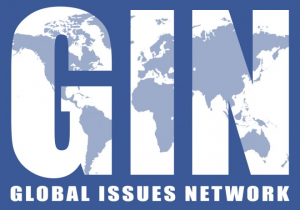GIN
What does the Global Issues Network do?
We nurture and mobilize transgenerational communities of global citizens to build a just and sustainable future.

GIN Mission
To empower young people to collaborate locally, regionally, and globally in order to create project based sustainable solutions for global issues.
To recognize and nurture youth empowerment.
GIN Vision
A world where global citizenry is championed by today’s youth.
40+ Student Led Conferences
Measurable Impact Spanning 10 Years
80,000+ students from over 100 nationalities
12+ conferences programmed for the coming year
Students build upon their passions and strengths to create positive change as leaders of today.
GIN Ethos
Engage empathy as Global Citizens.
Make our work effective and sustainable.
Answer our call to action as leaders of today.
Continually inspire and foster community empowerment.
Value life-long learning as a means to create positive change.
Innovate socio-environmental awareness, expression & action.
Real Projects: GIN Projects
A GIN project can take many forms. It is an expression of your passion and a result of effective collaboration. A GIN project is focused on working to address global issues in your direct community. It can focus on whatever issue you believe is important and needs to be worked on in your community, and should do more than just a small awareness campaign within your class. It should be something that will really make a change, even if just inside your school, and always remember, it starts with you!
Participating schools are encouraged to engage in GIN-related activities throughout the school year. These include GIN clubs or classes, local or global projects, local GIN conferences with local school networks and collaboration with regional GIN schools around the world.
GIN Conferences
Student-led conferences are supported by school communities across the globe. Regional and local conferences are growing and responding to their “Call to Action!” Students from more than 100 nations have presented their work at these Global Issues Network Conferences.
Each year, GIN conferences bring together students, teachers, experts, NGOs, and representatives from educational organizations. GIN conferences have ranged in size from 100 to 800 participants. Schools typically host the conferences, but organizers have included universities and even a U.S. state governor. More local conferences are also being organized each year.
GIN conferences are about cooperation and collaboration not competition. Students are expected to lead, with adults as mentors. A Global Issues Network Conference is empowering because all of the students attending have been involved in addressing global issues by creating and working on a project in partnership with their local community. Every student project team crafts a workshop to present to their peers that expresses their message, their strategies, their solutions and their challenges. This enables students to experience what it means to be an expert, a teacher, a student, and most importantly an empowered collaborative leader making a difference in their community. The keynote speakers and the students are peers in this setting.
GIN Curriculum
Empowers students to take action as leaders, team members, community advocates and problem-solvers.
Actively addressing global issues with project based peer-to-peer learning and collaboration.
Values empathetic action, global citizenry & lifelong learning, integrating both futurist and design thinking into sustainable projects.
GIN Curricula & Modes of Learning:
Inquiry & Project Based Learning
Leadership & Team Building
Design & Systems Thinking
Differentiated
Activism through the Arts
Foresight & Systems Thinking
Environmental Literacy Council Framework & 21st Century Skills outlined by Partnership for 21st Century Skills
Applied concepts and learning:
Leadership through collaboration and follow through:
The issues are tangible and the solutions are real through communal partnerships and problem solving.
Learning to question:
Construct essential questions that develop student thinking and efforts.
Understanding context:
Connects critical thinking, systems learning, community, culture and history.
Heighten communication skills through:
The arts, film & media by creating an effective strategy & message



